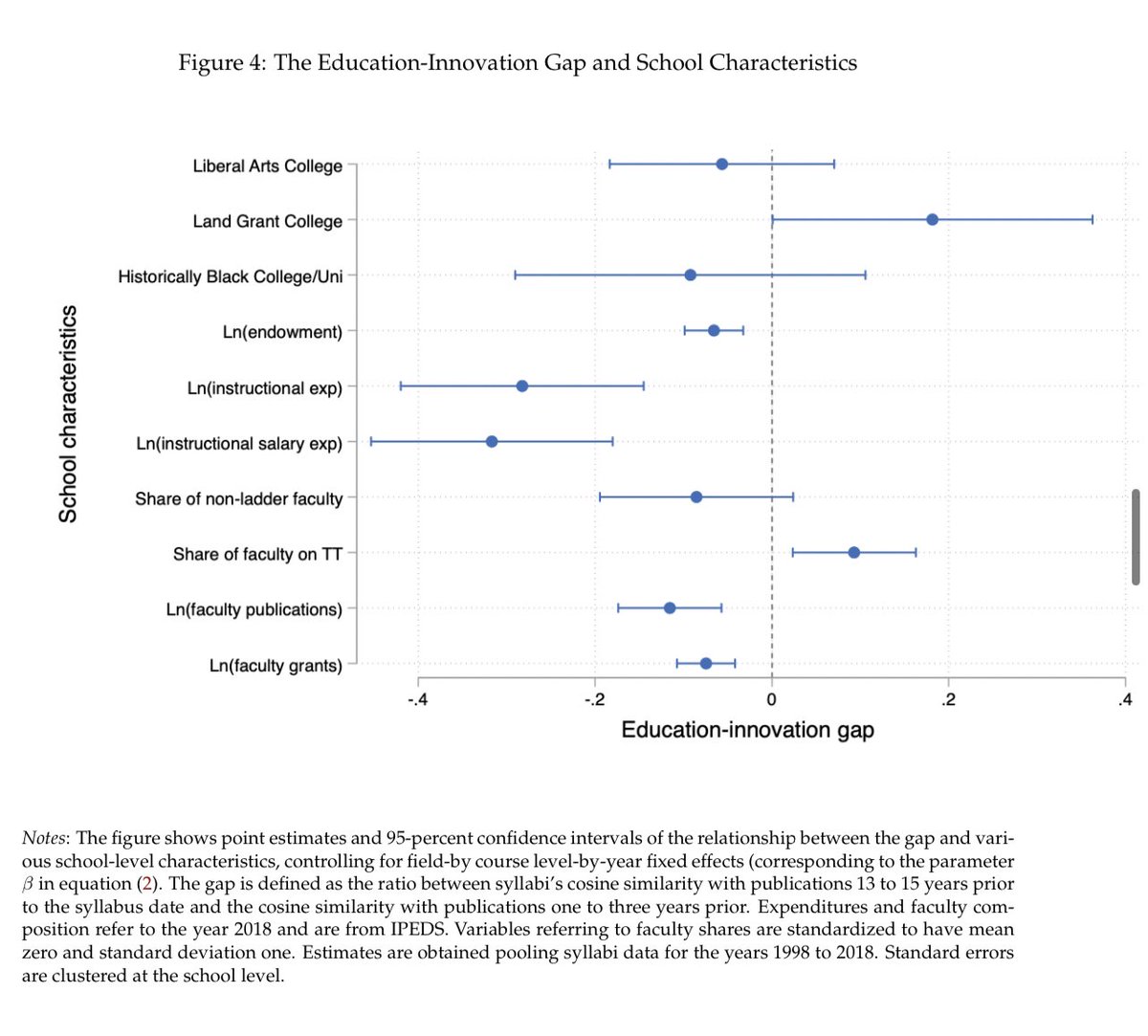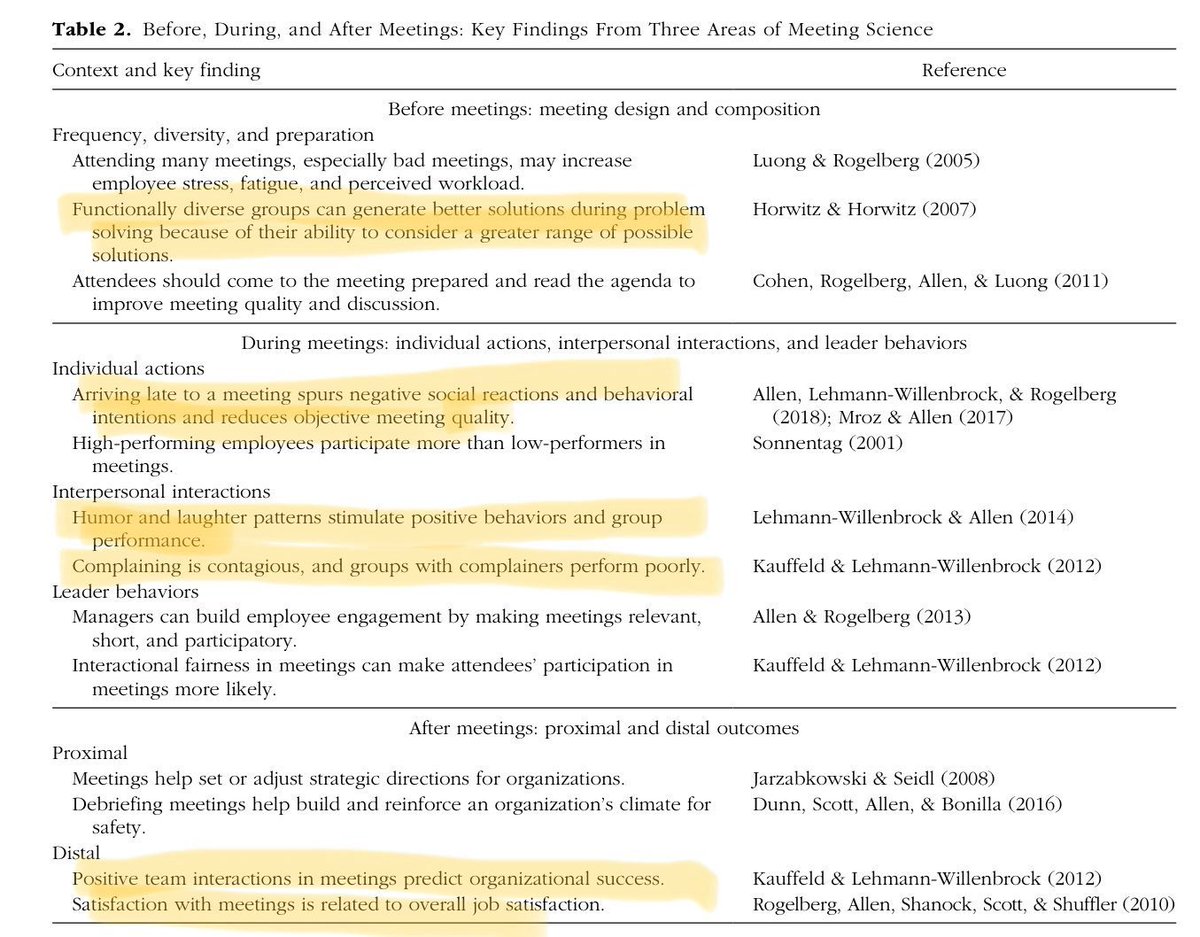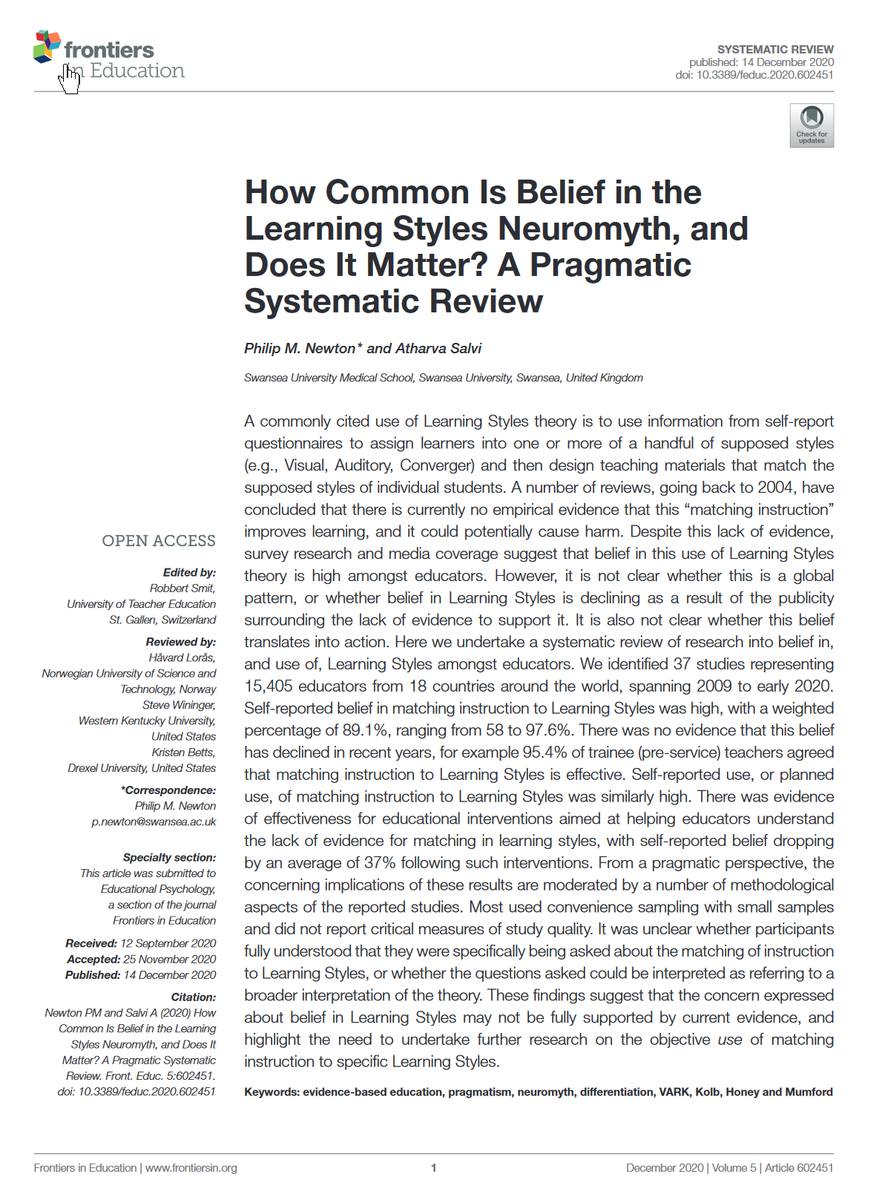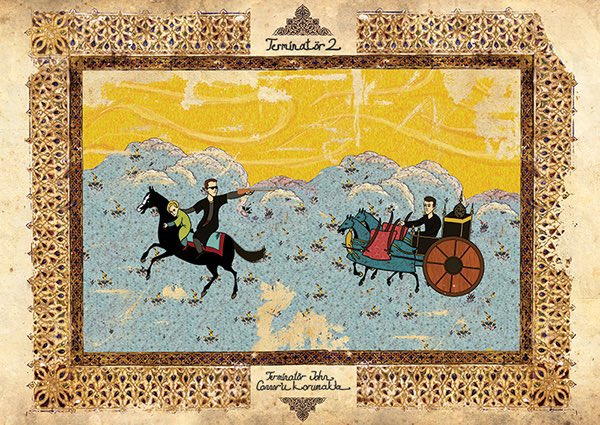
Key set of findings about universities using 1.7M syllabi:
👨🔬Classes that teach more recent academic findings are linked with higher graduation rate & income
🧑🏫Researchers teach more recent findings
🎓Elite schools teach more recent stuff, students at less elite ones benefit more

👨🔬Classes that teach more recent academic findings are linked with higher graduation rate & income
🧑🏫Researchers teach more recent findings
🎓Elite schools teach more recent stuff, students at less elite ones benefit more


Here’s the paper. songma.github.io/files/bm_edu_i… 

(For those reading the charts, a higher gap means that material being taught is less recent & cutting edge, so lower gaps are better)
And related work showing that what students learn in college matters, so supporting learning with instructional funding & by teaching the latest research is really important to long-term student outcomes, including earnings.
https://twitter.com/emollick/status/1443661119281844229
Another way to show the value of what you learn in college matters beyond networking and signaling... it even helps mafia members, where that other stuff shouldn't matter!
🔫Mafia members who went to college earned 8% more per year, even higher for those running complex crimes.
🔫Mafia members who went to college earned 8% more per year, even higher for those running complex crimes.

• • •
Missing some Tweet in this thread? You can try to
force a refresh

































